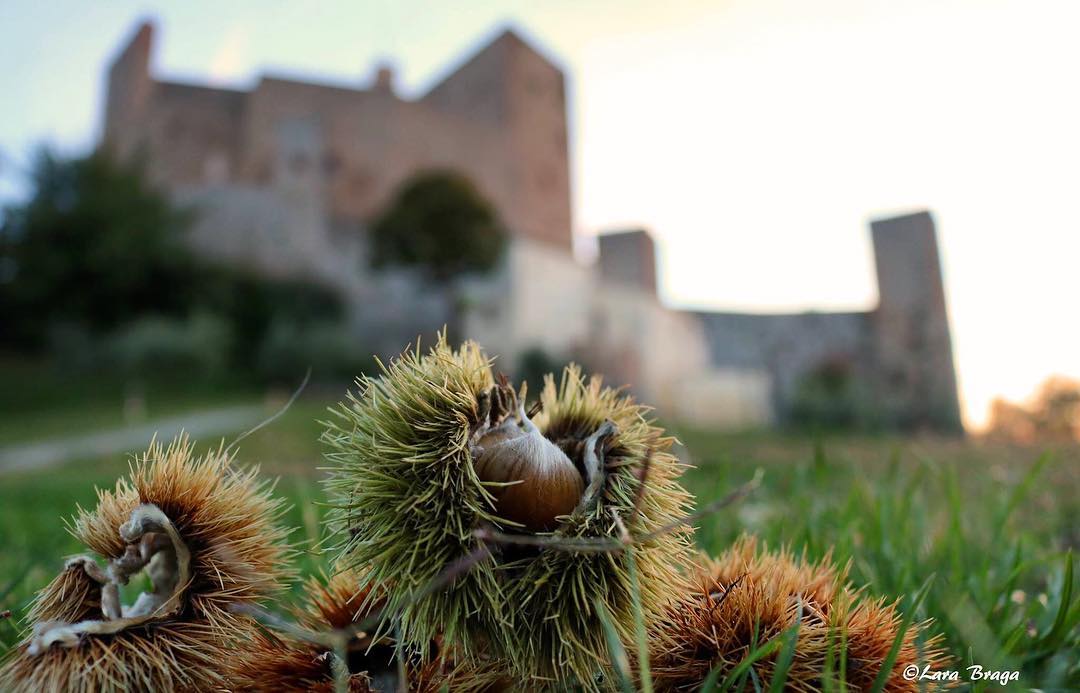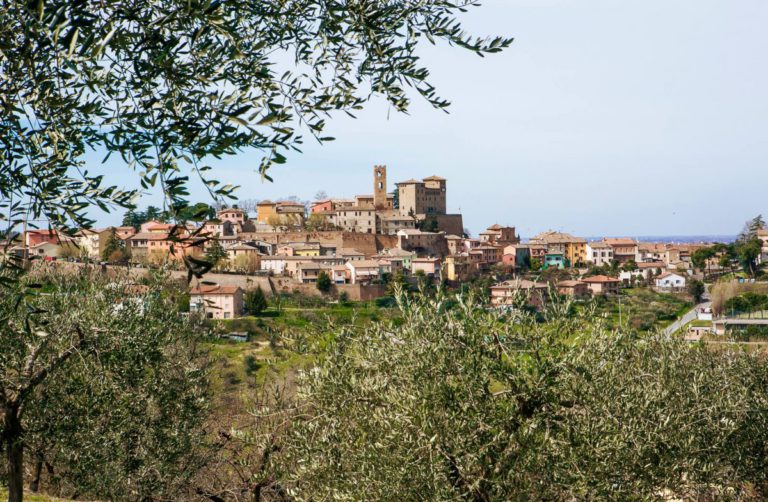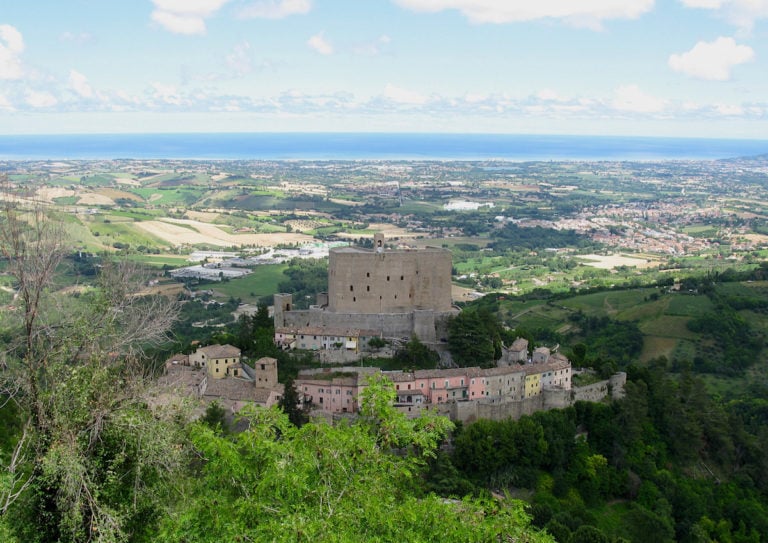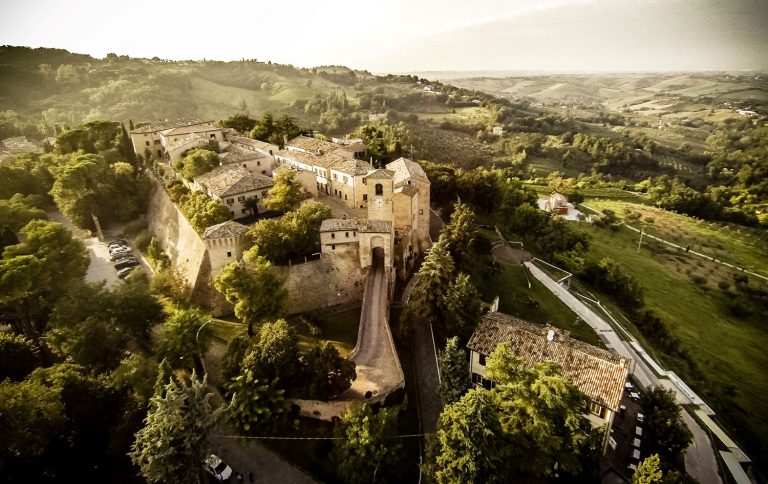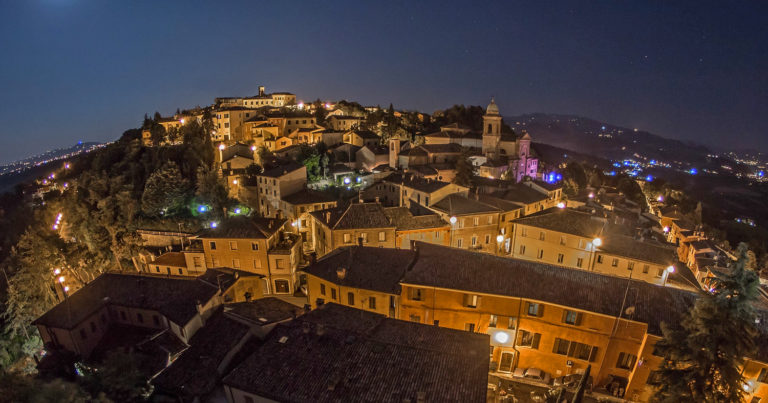If you travel from Cattolica inland along the River Conca, you’ll see an imposing fortress girded by thick walls on top of a hill. This is Montefiore Conca, a village of about 2000 inhabitants in the heart of a lovely valley.
Montefiore Conca has been awarded Orange Flag status by the Italian Touring Club in recognition of the quality of its tourist services, and it was also the scene of some pivotal historical moments around the time that the Middle Ages gave way to the Renaissance.
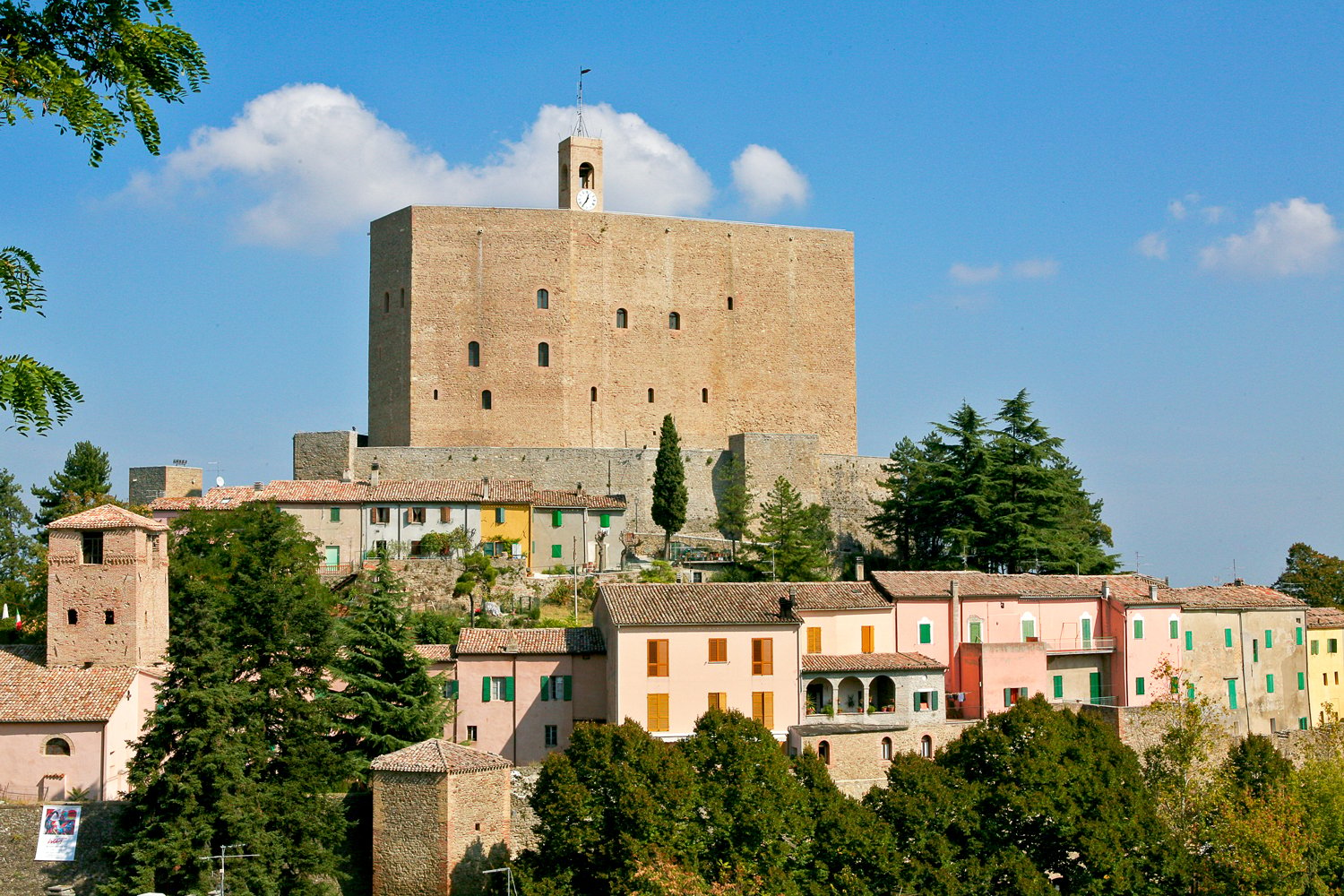
Montefiore Conca
History
Montefiore is a typical medieval village: a walled settlement with a solid fortress, a noble family of great leaders, stories of knights, ladies, hunts, the power of the papacy, and the shadows of war in the background.
The village is first mentioned under the name of Castrum Montis Floris in a document from the 12th century. In the 14th and 15th centuries, the village reached the peak of its importance under the powerful Malatesta dynasty, the Papal Vicars in this part of Romagna and the Marche.
A defining year in Montefiore’s history was 1322, when the Malatesta took complete control of the village, and Montefiore became the family’s exclusive private property. They embellished and fortified the castle, using it as their summer residence and a place to entertain important visitors like popes and emperors. Montefiore flourished, and mansions, churches and monasteries sprang up. Then, when Sigismondo Pandolfo Malatesta fell from grace in 1462, it all returned to papal control before becoming part of the Kingdom of Italy.
What to see
Montefiore retains all its medieval allure. Its labyrinthine lanes climb the hill, winding through three rings of walls before reaching the imposing fortress.
Park your car and walk through the monumental gate, Porta Curina. On your left is the town hall; on the right, the parish church of St Paul: its important collection of artworks includes the Madonna della Misericordia altarpiece and a 10-foot-high Christ crucified.
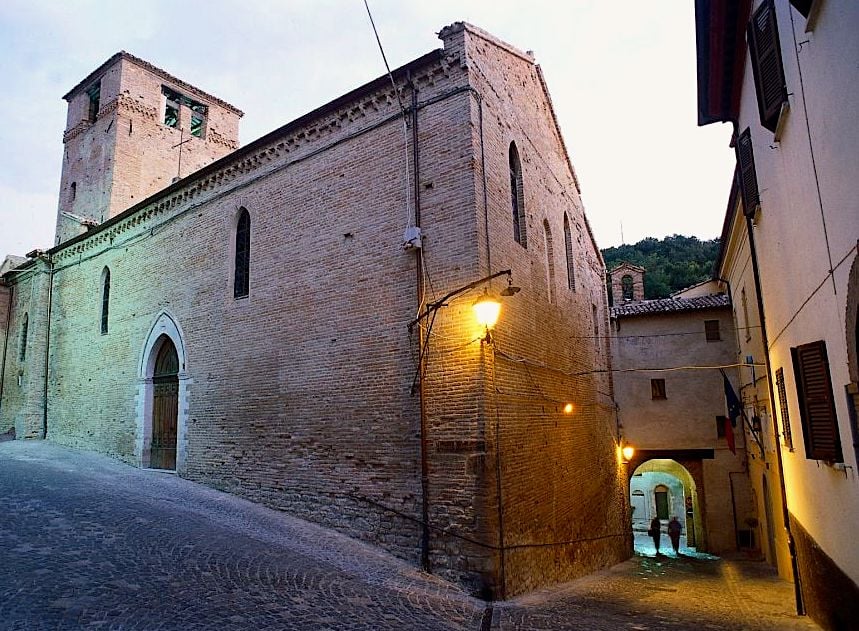
Church of San Paolo | Photo by Riviera di Rimini
The town has also made a significant contribution to the history of the applied arts through the atelier of the Fianchetti family, masters of ceramics. The fortress dominates the upper part of the village; the view from the top ranges from the Marche region on one side to the Adriatic coast on the other.
The fortress is laden with artworks, such as the 14th-century frescoes by Jacopo Avanzi in the imperial throne room, and there is also a private chapel. From Piazza della Libertà, an attractive path – the Passeggiata di Donna Costanza or Lady Constance’s walk – leads you around the village.
On the edge of town stand the Hospital of Mercy church and the sanctuary of Our Lady of Bonora, which attracts thousands of pilgrims every year with its 14th-century painting of the Virgin and Child.
What to do
Spring
- The peaceful footpaths offer some lovely walks in the spring air;
- A jaunt to the source of the River Conca on Mount Carpegna makes a lovely trip;
- Hire a bike and explore the fortified towns of the Montefeltro and Malatesta families.
Summer
- Feel the romance in the air as you stroll the village streets;
- Tour the Malatesta heartland by bike from Rimini via Cattolica, Gradara, Montegridolfo, Mondaino, Montefiore Conca, San Marino and Verucchio;
- Dive into Onferno caves for some refreshing cool air.
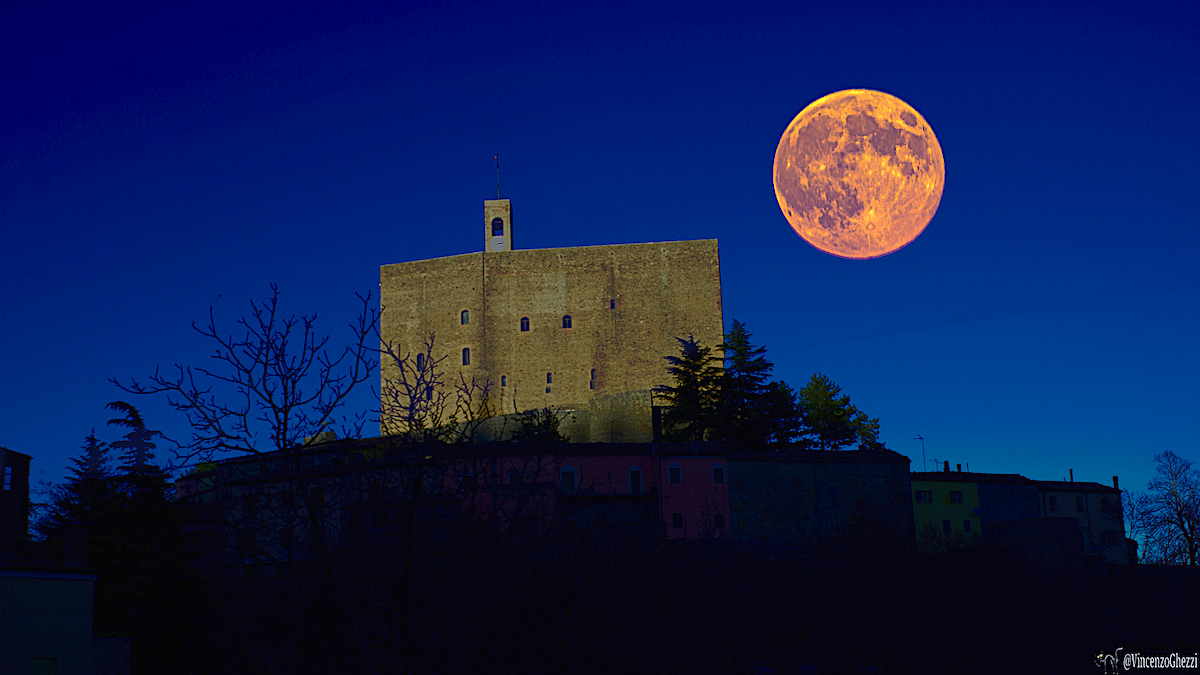
The palatium | Photo by Vincenzo Ghezzi, via Flickr
Autumn
- Don’t miss the chestnut festival (Sundays in October), the oldest in the Rimini area; ditto the olive festival in November.
Winter
- Come and see the living crib at Christmas time.
Events
The village’s strong medieval character provides an atmospheric backdrop for various popular events linked with Christ’s birth and death during the year. The living nativity scene is one, where locals dress up as characters from the Bible and re-enact scenes from the Christmas story. On Good Friday, a parade threads through the streets to the Hospital of Mercy church.
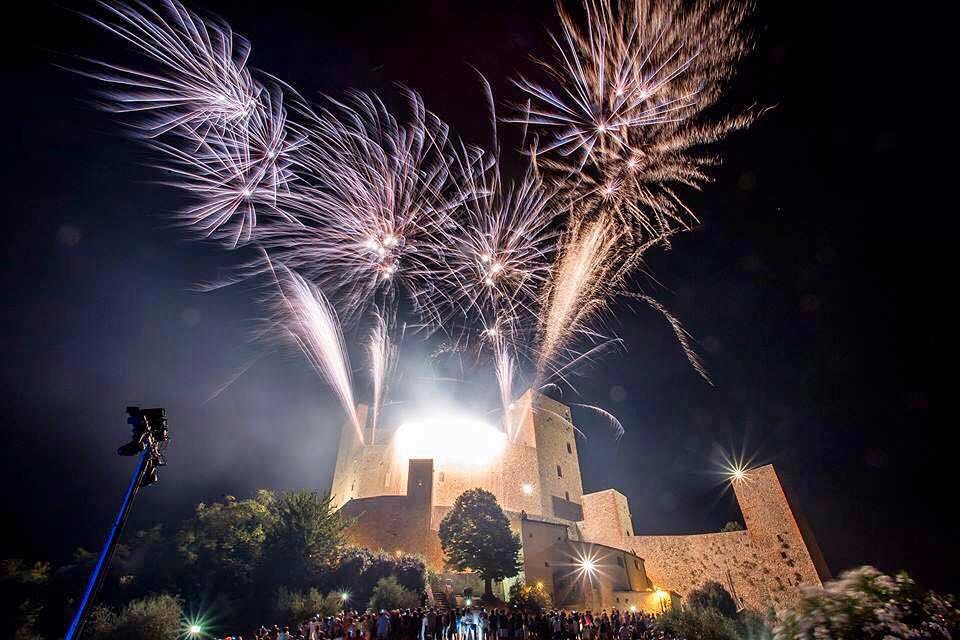
RoccaLuna | Photo by @montefioreconca
In July, the RoccaLuna event fills the streets with music, theatre and poetry during the week of the full moon. In autumn, food festivals celebrate local products from chestnuts to olives to healthy eating in general.
Food and Wine
The local food typifies the Romagna tradition, with stuffed piadina flatbread, home-made pasta and tasty meat dishes.
There is wine aplenty, with the fruits of the Sangiovese, Trebbiano and Pagadebit grapes plus a fine selection of olive oils and roast chestnuts.
How to get to Montefiore Conca
The village is perfectly placed 10 miles from the Adriatic (you can see the sea on a clear day), and it’s easy to reach by bus or car: take the SP17 road to Morciano then the SP36.
The [Emilia Romagna Villages] section is dedicated to Villages that are part of the Associations Borghi più belli d’Italia, Bandiere Arancioni del Touring Club & Borghi autentici d’Italia.
Author

Davide Marino
Davide Marino was born archaeologist but ended up doing other things. Rational – but not methodic, slow – but passionate. A young enthusiast with grey hair
You may also like
8 unmissable Castles in the lands of Guidi and Malatesta
by Walter Manni /// April 13, 2018
A trip to Montegridolfo, one of the most beautiful villages in Italy
by Davide Marino /// August 24, 2017

Interested in our newsletter?
Every first of the month, an email (in Italian) with selected contents and upcoming events.
